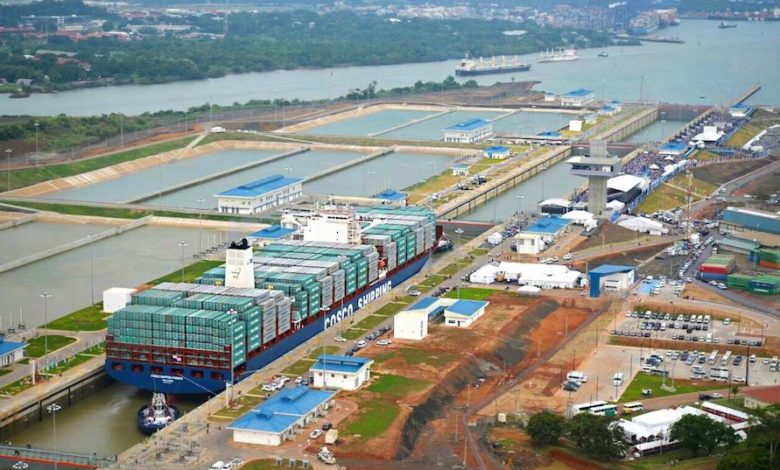Fast action on climate means ships must stay slow

Faig Abbasov, the aviation and shipping officer at Brussels-based NGO Transport and Environment, suggests today that any pick up in the markets should not be met with a corresponding hastening of vessel speeds.
In 1866 a fleet of clippers took part in the Great Tea Race, a competition to sail from China to London with the year’s new tea crop.
The result is contested to this day: the crews of Ariel and Taiping shared the prize after arriving at virtually the same time. They had covered 14,000 miles in 99 days.
These days shipping is considerably faster. A cargo from Shanghai takes around a month to reach Southampton, depending on its route and the number of ports it needs to stop at.
The advent of vast and powerful ships together with the Suez and Panama canals, not to mention new Arctic routes opening as polar sea ice melts, means cargo loads by ship are getting faster and faster.
Yet as the shipping industry faces up to its biggest challenge yet, this obsession with speed needs to be tempered with environmental realism.
Shipping accounts for around 3% of global greenhouse gas emissions; on par with Germany. Continued failure to address the sector’s rampant pollution could see its CO2 footprint grow 20-120% by 2050.
New logistics technologies such as blockchain, cleaner propulsion technologies like battery/hydrogen fuel cell hybrids, sails, flettner rotors, better propellors and more efficient operations are ways in which the industry can start to meet this challenge.
But there’s an additional and altogether faster – and easier – way it can take immediate action: slow down.
We’ve already seen how this works following the 2008 global financial crisis and ensuing slump in freight rates. To save money, e.g. 12,000-14,500 TEU container vessels slowed on average to 16 knots in 2012 from a usual speed of 21 knots in 2007.
The results were dramatic. A 22% cut in average sea speed resulted in 49% drop in required engine power, slashing energy use per day by a whopping 53%. As a result, sector’s emissions in 2012 were considerably lower than 2007.
This is no surprise; due to high frictional resistance of water, the relationship between speed and required energy is cubic (or quadratic considering it takes longer to reach the destination at lower speed). The implications are simple: reduce sailing speed by 10% and energy demand will slump by 27% (or 19% in quadratic function).
Research compiled by CE Delft illustrates how fleet-wide operational speed reduction can cut emissions of ship CO2 and other harmful particulates by as much as 35%. And given that this does not affect the installation of powerful engines (hence higher design speed), ships will have enough reserve power to sail against the waves in adverse weather conditions.
The ultimate benefit of speed management is the potential to peak and reduce GHG emissions in the short-term. As a result, the process towards decarbonisation can take longer and less burdensome, as more time will be available to test and deploy new technologies.
While the initial speed cuts have been voluntary, local authorities mindful of air pollution and their own carbon footprint have started to take affirmative action.
For instance, Los Angeles, San Diego and Long Beach are among ports to have asked visiting ships to slow to 12-15 knots depending on the vessel as they approach the coastline. These practices need to be extended to whole journeys to avoid speeding up on the high seas to recover lost time.
Ship engines are designed for certain continuous operating loads, not only because of their optimal efficiency, but also because of the safety and engine health considerations. Still, with nearly 10 years of slow steaming experience under their belts, and data aplenty, there seems little cause for major concern provided engineers take care of their ships.
Of more concern is the impact low oil prices are having on the sector, and the widespread practice of slow steaming.
New evidence suggests owners are cranking up the speeds once again, which endangers the planet and the sector’s impending UN climate goal – due to be agreed next April in London.
In the absence of a binding rule it’s understandable many captains will speed up: hands up who hasn’t broken the speed limit on a motorway?
And it’s not only a firm global rule we need, but also differentiations for various classes and maybe even specific routes that could accommodate concerns of countries at the end of long supply chains.
Tracking ship movements via satellite data makes recording speeds and ensuring compliance straightforward. The advent of blockchain makes verifying and recording this easy and trustworthy.
What the sector needs is predictable rules for all, and a pathway that allows it to make CO2 cuts in an efficient and economic fashion.
Should ships start speeding up that challenge becomes all the more hard? Shipping needs to wise up, smell the roses and pay its fair share of the climate bill. Otherwise it’ll cost the Earth.
